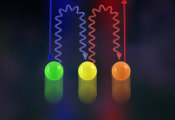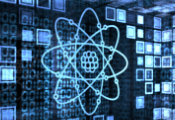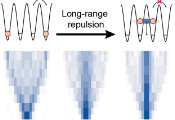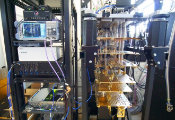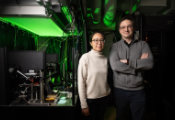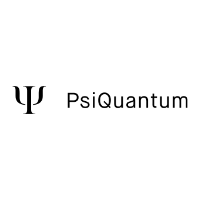Cross-Disciplinary Work on High-Precision Measurements Pushes Bounds on Dark Forces
February 11, 2025 -- When world-leading teams join forces, new findings are bound to be made. This is what happened when quantum physicists from the Max Planck Institute for Nuclear Physics (MPIK) and the Physikalisch-Technische Bundesanstalt (PTB) in Braunschweig combined atomic and nuclear physics with unprecedented accuracy using two different methods of measurement. Together with new calculations of the structure of atomic nuclei, theoretical physicists from the Technical University of Darmstadt and Leibniz University Hannover were able to show that measurements on the electron shell of an atom can provide information about the deformation of the atomic nucleus. At the same time, the precision measurements have set new limits regarding the strength of a potential dark force between neutrons and electrons.
For almost a century, measurements have indicated that a significant proportion of matter in the universe consists of unknown dark matter, which interacts with visible matter through gravitation. It is unclear whether there are also new, so-called “dark forces” that can “communicate” with the visible and the dark matter.
One approach is precision spectroscopy of electrons: Laser light of appropriate frequency can be used to excite quantum jumps of electrons, causing a transition to a higher energy level and then emitting energy in the form of light when they jump back. The exact transition frequency also depends in detail on the mass of the atomic nucleus and other nuclear properties. Variants of an atom that differ only in the number of neutrons in the nucleus are called isotopes. It has been known since the 1960s that these differences are also reflected in differences in the transition frequencies.
Such forces should also act on atoms, which can be analyzed with high precision nowadays. “Measuring the shift in electronic resonances in isotopes is a particularly powerful method for shedding light on the interaction between nuclear and electron structure”, Tanja Mehlstäubler (PTB) explains. Isotopes are different variants of an atomic element that differ only in the number of neutrons in the nucleus.
In 2020, a team at the Massachusetts Institute of Technology (MIT) discovered a deviation from the expected result – a nonlinearity – while examining such isotope shifts in the element ytterbium. This sent the world of atomic physicists into a spin: Could this anomaly be the first evidence of a new “dark force” or is it due to properties of the atomic nucleus? Did atomic physicists enter nuclear physics through the back door by comparing the transition frequencies of electrons measured in different isotopes?
Driven by this question, Klaus Blaum (MPIK) and Tanja Mehlstäubler set out to investigate the ytterbium isotope shifts. Their research teams carried out high-precision measurements of atomic transition frequencies and isotope mass ratios of ytterbium isotopes. Linear high-frequency ion traps and ultra-stable laser systems were used for optical spectroscopy at PTB. At MPIK, the isotope mass ratios were determined in the PENTATRAP Penning trap mass spectrometer. Both measurements were up to a hundred times more accurate than previous measurements of this kind.
The researchers confirmed the anomaly, and the team was able to provide an explanation with the help of new nuclear theory calculations by Achim Schwenk's group at TU Darmstadt. In collaboration with theoretical atomic physicists from MPIK in Heidelberg and the University of New South Wales in Sydney as well as particle physicists from Leibniz University Hannover, they were able to establish a new limit for the existence of dark forces.
The international collaboration team was even able to use this data to obtain direct information about the deformation of the atomic nucleus along the ytterbium isotope chain. This can provide new insights into the structure of heavy atomic nuclei and into the physics of neutron-rich matter, which forms the basis for understanding neutron stars.
Looking forward, Klaus Blaum says: “This research opens up new opportunities for atomic, nuclear and particle physics to collaborate in the search for new physics and a better understanding of the complex processes that determine the structure of matter.”

